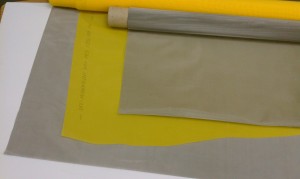Custom screen printing on silicone rubber molding can make your product stand out and be fully customizable. When printing on silicone with silicone ink, the molecular bond created is extremely durable and extremely resistant to wear and abrasion. There are many factors to consider, and one of the most preliminary decisions to make is in building a screen for the project. The decisions involved in choosing the proper materials in building a screen are vital to the success of a screening project. There are many variables to consider, such as frame selection, frame strength and proper mesh counts, which are important decisions that need to be made when building a screen for silicone printing.
Frame Material
Frame selection is the first step in process. The frame is the most critical component in the successful operation of screening. Choosing a frame material that exceeds requirements ensures the reliability and stability for the life of the frame. Problems that can arise from poor frame choices include poor registration, ripping the mesh during tensioning or screening, inability to hold tension and inconsistency in color and image replication. Retention frames are the best type of frame for printing on silicone rubber molding. They can be re-tensioned as needed during production. In addition, they have a very high tolerance against wear which, in turn, extends the life of the screen.
Strength
Frame strength is another factor to consider when choosing a frame material. A strong stable frame can handle high tensions for clean accurate printing. Twisting or warping can occur with weak frames. This is when one corner of the frame pulls up distorting the frames flatness. The result will be distortion of the image and uneven stencil thickness. Steel frames are an option and are strong, but are vulnerable to rust and corrosion and are heavy. Aluminum frames are the best option to avoid these issues. Aluminum frame have many advantages, including being lightweight, supporting high tensile strengths. They are anti-corrosive, don’t rust and are easily cleaned to extend production life.
Mesh

At SiTECH, we make all of our screens in-house to ensure the highest quality decorating of all silicone rubber molding components. Proper meshes are chosen and tensioned using the latest technology to perform properly and accurately from start to finish. For all of your custom decorating designs to help your product stand out, trust the experience and reputation SiTECH has to offer.





